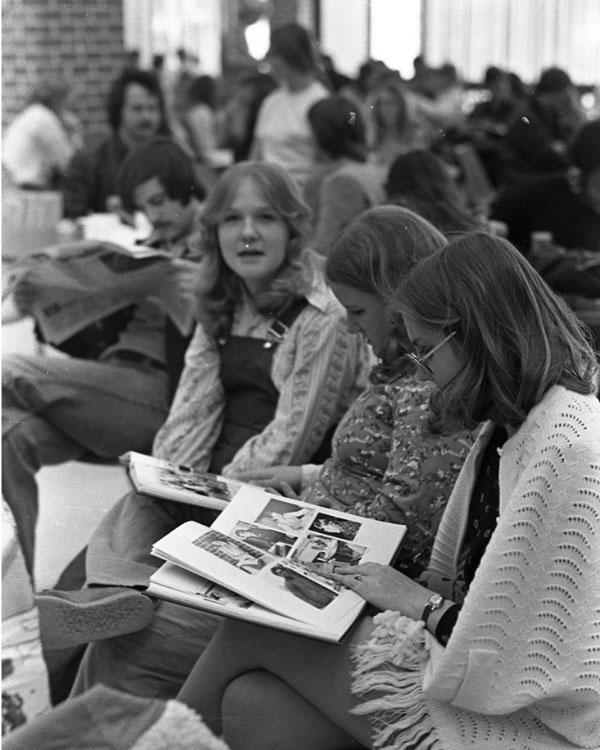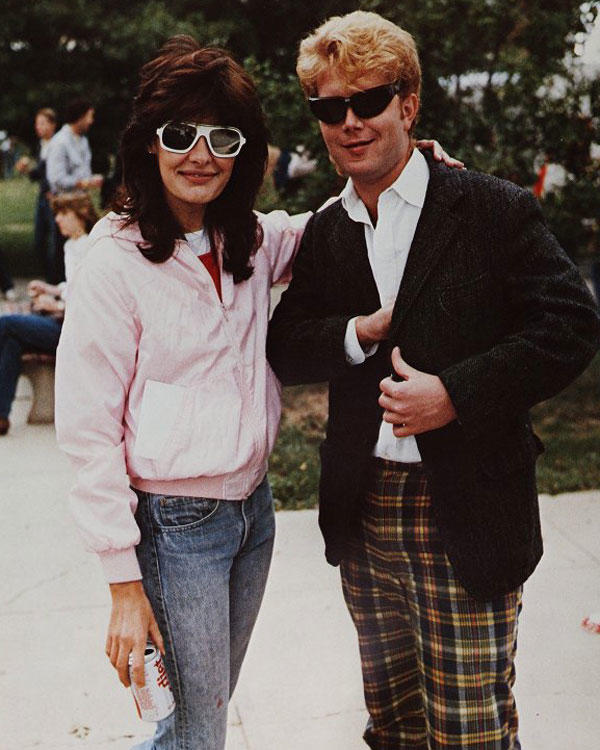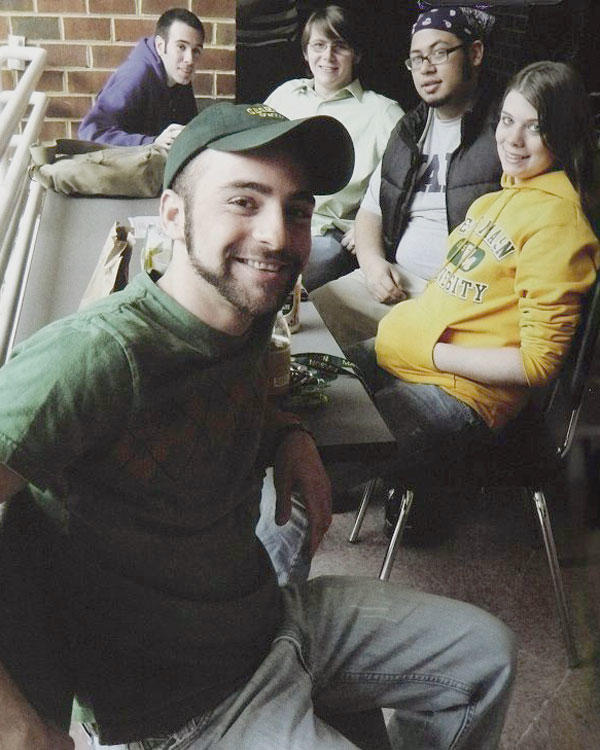Want a blast from the past? Trying to remember the name of that amazing classmate or inspiring professor? Browse Mason's collection of archived yearbooks from the past five decades.
"The mid-1970s was a period of challenges, change, and rapid growth for the University. George Mason made the committment to provide equal opportunities within the organization for faculty, students, and staff, with Dr. Dykstra creating high-profile minority affairs positions within the University's administration. Significant growth took place on the campus as landmarks such as the Student Union Building, Robinson Hall A, and the Fenwick Library Tower were constructed. The first housing facilities on campus, the Student Apartments, opened in October 1977."

Mason’s student population grew rapidly in the 1970s from 2,390 in 1970 to 13,293 in 1980
"Under President George Johnson’s watchful eyes, GMU has climbed to its feet to gain acceptance as a major institution… The thrust toward policy sciences, already underway, found firm footing to offer more programs suited to the residents of the Washington, D.C. area. The administration’s commitment to growth, quality, and recognition took form in new programs, faculty members, and brick and mortar additions to campus."

The Quad in front of SUB I was always a popular spot for outdoor events and meeting up with friends.
"In August 1995, George W. Johnson, the University’s president since 1978, announced that he would retire at the end of the school year in 1996.
During his tenure, the university had expanded from a medium-sized local institution into a nationally-recognized university with distributed campuses in Arlington and Prince William, a law school, and doctoral programs. To honor Dr. Johnson’s service and accomplishments, the University Learning Center would be dedicated to him and bear his name.
On April 12, 1996, the University Learning Center was renamed the George W. Johnson Learning Center in a ceremony held on the North Plaza."

In 1998 Mason was the first university to host the World Congress on Information Technology
"Dr. Alan G. Merten’s story, like Johnson’s, is filled with several major successes. He came to George Mason in 1996 believing that the University’s location made it responsible for both contributing to and drawing upon its surrounding communities—local, national, and global. George Mason was becoming recognized and acclaimed in all of these spheres, following its hosting of the World Congress of Information Technology (WCIT) in 1998 to its celebrating a second Nobel Prize-winning faculty member in 2002 and its cheering on the Men’s Basketball team’s in their NCAA Final Four appearance in 2006. Enrollment increased from just over 24,000 students in 1996 to approximately 33,000 during the spring semester of 2012, making George Mason Virginia’s largest public university. With these and other accomplishments, George Mason had begun to gain prominence at the national level."

In 2004 Mason became the largest public university in Virginia with an overall student enrollment of 28,750.
